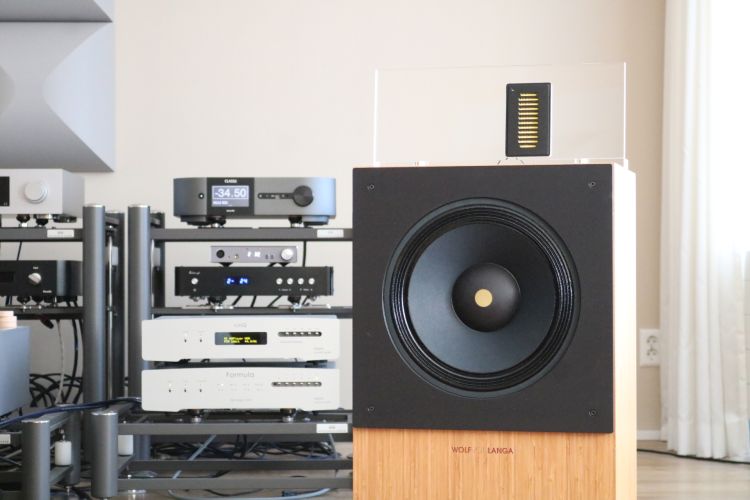
Review sample supplied by Callas Audio
Retail price in the NL including 21% VAT: 14.990 euro
Callas Audio
Callas-Audio started in 1998, based on the ‘wohnraumstudio’ concept. A rebellious action in the Netherlands at the time, back then, Callas Audio was one of the forerunners. Managed by Ron Ploeger, still every bit as enthusiastically today as back then, Callas-Audio represents brands that convey, first and foremost, the message of the music.
I first met Ron over 20 years ago, well before the turn of the century. This was at the point in time that I had not yet started with my review work. Ron is relaxed, patient and soft-spoken yet highly knowledgable, and he was like a fountain of information for me. Propelled forward by his enthusiasm and encouraged by helpful bits of advice spread over time, I went on to listen to every piece of HiFi-equipment that I could get my hands on while building my personal knowledge. Looking back, Ron was one of the important motivators for me to start what would eventually become HFA.
Recently, an audio buddy wanted to purchase a CD transport from Callas Audio’s Audioccasion branch. Realizing that it had been far too long since I last spoke with Ron, I decided to hop along. As is common for any component that you purchase from Ron, he prepared a nice demo. The equipment used was familiar – with one exception. What were those strange-looking speakers?
Well, these were, of course, the WvL SONs that would eventually turn out to become the subject of this review. During that visit, however, none of this was planned just yet.
I’ll leave my listening impressions for further below but I must mention right now that mere moments after Ron hit “play” I was deeply impressed. What followed was a pleasant listening session and an afternoon that flew by. Ron did share his enthusiasm for the SONs and mentioned that they were shaping into the end of his quest for finding the ideal speakers.
A month or two later, Ron was happy to announce that he had indeed found his destination loudspeakers and he went on to unveil that he had also added Wolf von Langa to the Callas Audio portfolio to represent the brand in the Netherlands. Would I be interested in doing a review? You bet I was!

Maria Callas pier Paolo Pasolini during the filming of Medea
Wolf von Langa
WvL was founded by Wolf von Langa and is operated from Neunkirchen, Bavaria, Germany. The company has been designing and building field-coil loudspeakers for 10 years and are quite unique in doing so.
What’s interesting to note is that the WvL product range is not based on the commercial idea of increasing the price for bigger speakers in predetermined steps. Varying prices are based solely on manufacturing costs, meaning that even the smallest system is capable of all the big sounds. Quality is always the main driver and all the WvL products are built for a lifetime.
WvL rightfully mentions that “Human ears are different, and the personal liking of each of us might differ”. This has led them to produce a range of speakers with slightly different sonic perspectives by using various driver combinations from model to model that are nevertheless all made with cutting-edge techniques.
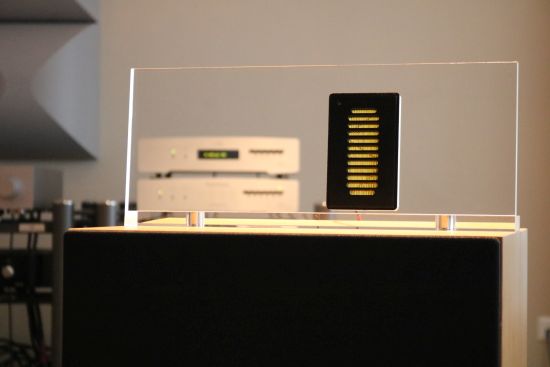
WvL SON
The WvL SON is a 2-way speaker with an AMT (Air Motion Transformer) Jet tweeter (made by Mundorf on WvL specification), an FC-HRP (Field-Coil current-controlled) woofer and a passive high-strength aluminum radiator on the rear operating according to the Helmholtz Resonator Principle.
With a frequency response of 25 Hz to 30.000 Hz, the SONs are true full-range speakers, despite their relatively modest dimensions of 404 mm wide, 872 mm tall and 300 mm deep. And given that they have a quoted efficiency of 95dB (1W/1m) combined with a continuous power handling of 150 Watts and a crazy-high 1500 Watts peak-capability (for 10ms), one might be forgiven for assuming we’re talking about the company’s top-level loudspeaker, rather than the entry-level model.
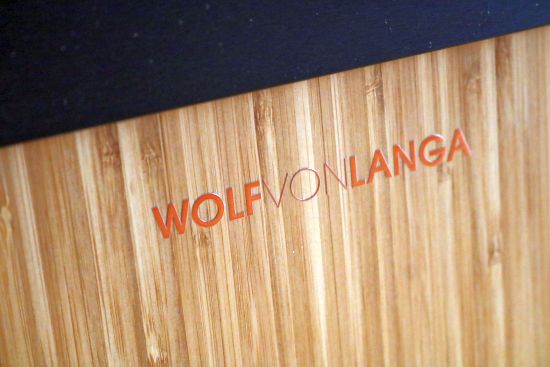
The handsomely-sized cabinet is made from acoustically inert high-density fibreboard with a double-sided PMMA coating. The speakers are available in ultra-gloss white, ultra-gloss black and Bamboo veneer (as reviewed here), which has a color and appearance similar to natural oak.
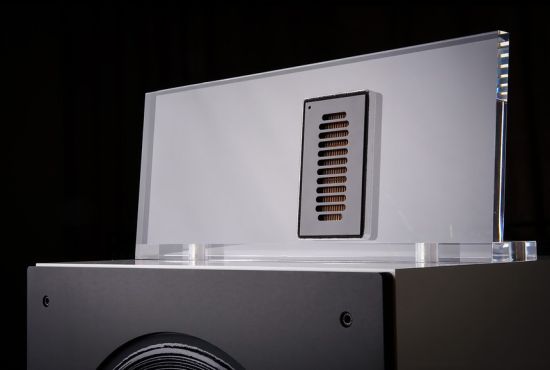
The AMT tweeters are soft-mounted in a translucent acoustically inert material so that they not only appear to be floating above the speaker, in a way, they really are floating. The high-frequency modules can be positioned freely on the low-frequency module but are very cleverly held in place by powerful magnets hidden underneath the veneer. WvL specifies a starting distance of 13cm from the speaker baffle to the high-frequency module. A neat trick that Ron showed me is to simply use a CD case for spacing. When using the case’s narrow side, lined up to the edge of the cabinet’s wood section, this results in a 13,5 cm distance from the tweeter module to the most protruding black section of the baffle.
While this construction is meant to find the ideal timing alignment that ties in with listening distance and ear height, in practice, one can of course also freely position the modules according to personal taste. In my listening tests, simply stated, the high frequencies become a little bit more forward when the module is positioned closer to the listener and vice versa. In addition, in doing so, one can also adjust the precise balance in the upper bass and lower midrange where a position further away from the listener tilts the balance to reveal more of the woofer’s upper bass while a position closer to the listener will tilt the balance such that the tweeter’s lower midrange becomes more prominent. The ideal position, in most cases, will be in-between these two extremes. Worth noting is that all this does is adjust the relative balance between the two drivers, the tweeters never actually sound forward in an annoying manner, not even when positioned too close to the listener.
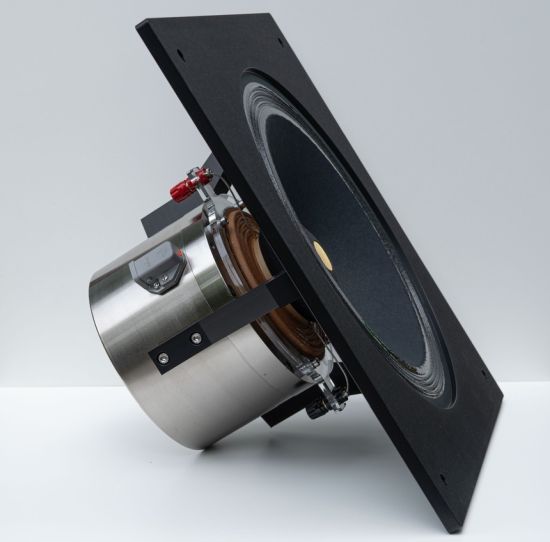
The low/mid-frequency unit is what this speaker is all about. Mounted in the SON is the WvL AC-2676 Field-Coil driver with an effective cone diameter of 258 mm. This would translate to a 10-inch driver but given that most manufacturers include the surround in their measurements and sometimes even the cage edge, it’s closer to a typical 12-inch driver. The cone is made from a proprietary hydrophobic paper material that is very stiff but extremely light, consisting of polysaccharides and silk fibers. The driver uses an underhung voice coil (to obtain the best linearity) that is made of edge-wound copper-coated flat aluminum wire. Rather than using a standard pressed- or cast metal cage as nearly all other drivers have, the WvL driver’s soft textile surround is attached directly to a 40×40 cm square aluminum baffle while the heavy motor assembly is mounted via three milled metal rods. The assembly is aerodynamically vented yet extremely sturdy and wobble-free.
On the loudspeaker cabinet’s rear side is a massive high-strength aluminum passive radiator that is matched to the active driver on the front. Unlike with bass-reflex ports, this should lead to the absence of flow noise and other port-related artifacts. Additionally, the passive radiator is pivotal for the SON’s amazing quoted 25Hz bass output at +/-3dB which would not be possible with a passive driver in a fully-closed cabinet of this size.
The internal crossover consists of separate high-frequency and low/mid-frequency sections to enable bi-wiring and bi-amping and uses pure copper air inductors and high-speed low loss film capacitors. The crossover point is at 800 Hz. The excellent WBT NextGen pure copper terminals (as I see being used on more and more products) are used for all speaker cable connections and they allow the use of bi-wiring or bi-amping. Two jumpers are required for single-wire loudspeaker cables and, normally, WBT Power Bridges come supplied. In my case, they were accidentally left out which gave me the opportunity to experiment with different jumpers and connection methods. I’ll explain all about this further below.
The review samples did not come with feet but successive units will be delivered with rubber feet and threaded inserts on the bottom to allow the use of any coupling devices. However, as Ron mentioned, the speakers work best when used with a compliant coupler such as Sorbothane-like materials. Spikes or other hard couplers can of course be used but tend to offset the delicate balance between the low/mid unit and the high-frequency unit. I took Ron’s advice to heart and used the moderately compliant Artesania Neoprene pads with great results.
The SON’s main feature, however, is of course the current-controlled magnetic field that is the heart of the Voice Coil driver.
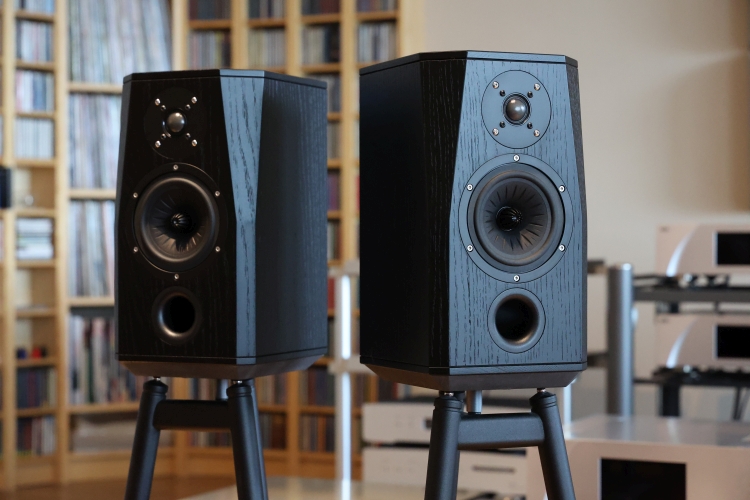
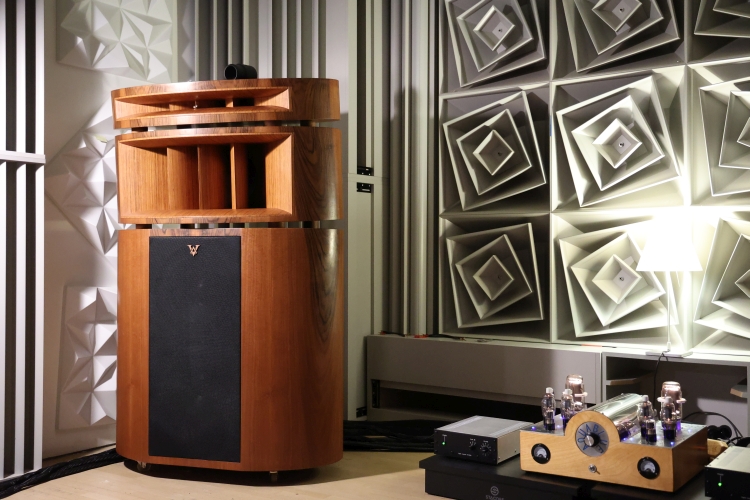
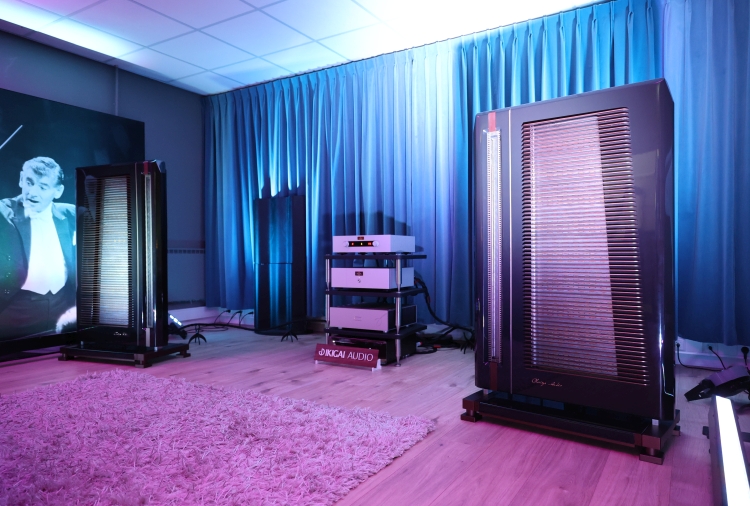
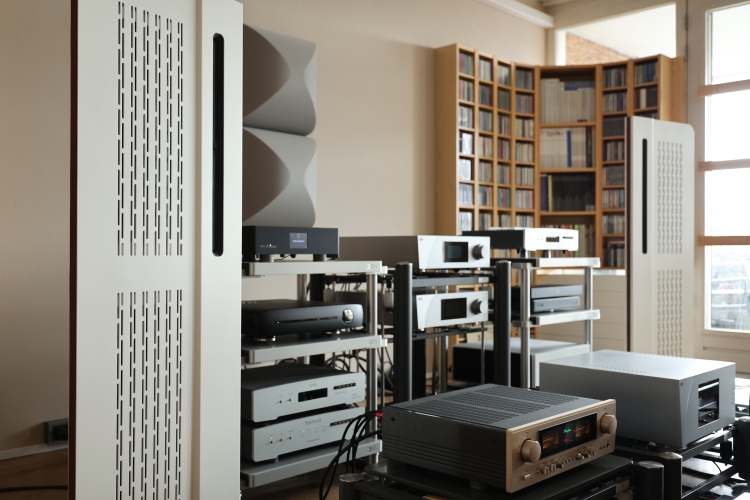
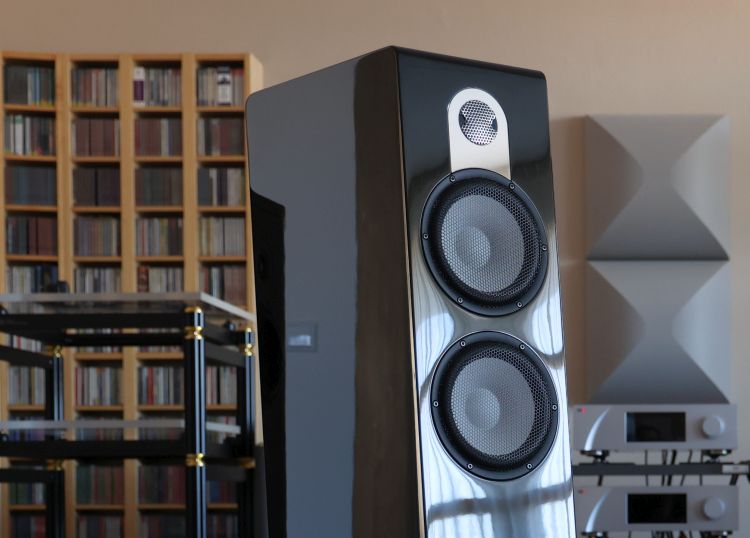
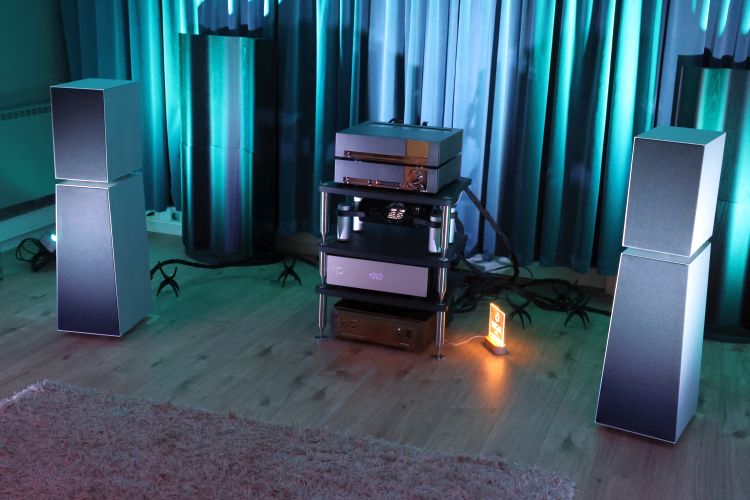
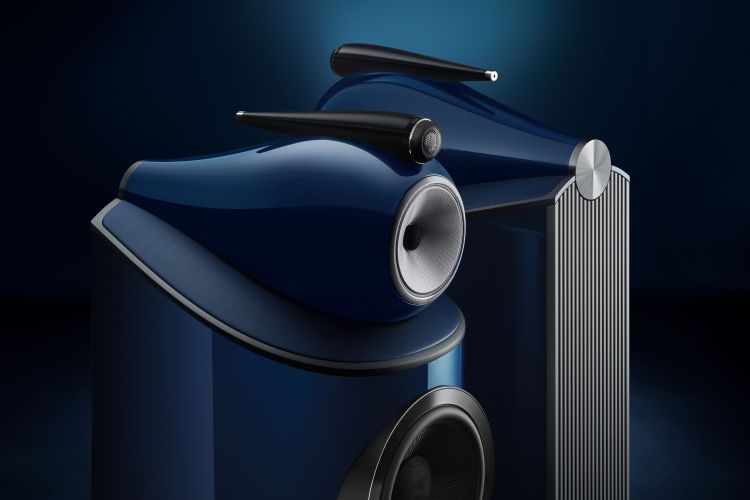
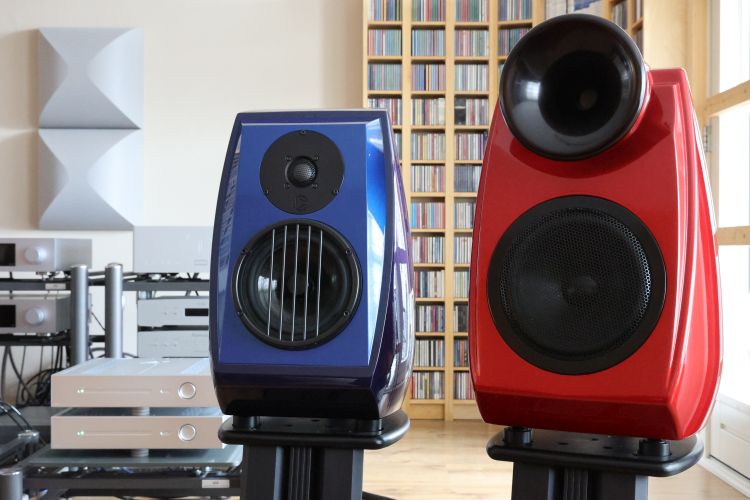
Hello from Bonn in Germany,
many thanks for this formidable review. As I read some very important comparison points to the Magico, etc., and wondered which would be the SONs main strengths against the Aequo Audio Stillas. I am considering both as my next speaker, my main priorities are low-level details, transparency and soundstage.
Many thanks in advance,
Merry Christmas,
Adrian
Hi Adrian, While I’ve not had the SONs and the Stillas available at the same time I can safely say that they are very different. In terms of low-level details, the SONs are the very best that I have ever heard, period. In terms of transparency, the Magicos and Sons are more or less in the same ballpark while the Stillas lag behind a bit. The Magicos do sound more linear than the SONS and Stillas but the SONs are more direct and more revealing. In terms of soundstage focus, depth and layering, the Stillas and SONs are largely comparable and both are better than the Magicos. The biggest differences, however, are in terms of character and overall presentation, as described in detail in the respective reviews.
Hi Chistiaan,
I really enjoyed reading your review and the more I read the more frustration came over me! It’s been a while since these SOUNDS have been eyeing me, these speakers look a lot like my ideal in terms of rendering and personality, that is to say, no makeup or other glitter to try to seduce at all costs, it is pure music, direct, alive, organic, present …! I can’t even imagine what the Chicago loudspeakers from the same manufacturer must look like! Regarding the choice of amplifier, I thought of the Greek tube amp manufacturer, as an integrated amp, the Aeolos Ultima model (KT150 tubes) or as a separate amplifier / preamplifier! there is also the Italian manufacturer Grandinote and its integrated amplifier Shinaï (Class A) with which the SON speakers should give their best! Also consider the cables from the manufacturer of the country of the maple leaf LunaCables (Orange, Red or Black), you should test them! Thank you for your review and happy new year to you !
Hi Christiaan,
Thanks for another interesting review. I was hoping you’d keep the Son speakers in your review set up.
I have a pair of them in a system in another house and previously ran a pair of S1 MkII here in my main system – Albeit both systems have way more modest front end and amplification than your reference gear – the Sons are nonetheless beguiling.
I think it’s your comparisons and analysis with a range of ancillaries that helps readers understand what equipment is capable of with synergy – can’t do that at home.
BTW I changed the main system speakers to A5 a while ago and have been impressed that the multiple drivers haven’t lost too much coherence from the s1’s, while achieving more balance through the full range.
Richard
Hi Richard, thank you for your kind words! Indeed, the SONS are absolutely beguiling. What they did do was move me to sell the Logans. The plan was to get Magico S3mk2’s but, alas, while they obviously have better bass and are slightly more highly resolving, they performed less well than the S1’s in several areas (spaciousness, flow, treble openness and air) and so I am currently only using the S1mk2’s in the main room. If I had more rooms as well as more budget, then I’d likely want to have a pair of SONs as well, especially now that I am reviewing Melody tube amplifiers and having concluded (using the modest Xavian Perla Esclusivas in the other room) that the Everest 211 SET amp is definitely something special. If it works (with uncomplicated and sensitive speakers), SET can be magic and given what the SONs do, the combination could be heaven. Oh, I also noticed that if Magico speakers have one overall quality, it is coherence, indeed, no matter how many drivers they use. However, I do find that the more recent models (most Mk2 S-series models, the A3, and many models in the M2 range) sound quite full and dark. That said, he A5’s actually offer good value for money which is something of an oxymoron for the brand:-)
Hello Christaan,
I am quite tempted by the WvL SON speakers, and in part because of your thorough and excellent review. But given that you found them to be a bit “finicky” about the amplifiers used to power them, I wonder if you might be able to provide any insights into any likely synergy – or lack thereof – with the Circle Labs A200 hybrid integrated amp? I own an A200, and am quite happy with it. However, as it is capable of generating more power than the amplifiers that are typically reported to match well with the SON, and also has a fairly high damping factor and capacitance, I have some concerns.
Any insights that you could provide would be much appreciated.
Best regards for the new year!
Tony
Hi Tony, high power and high power supply capacitance in and of themselves are no problem and can actually be beneficial. The main factor in my opinion for a speaker like the SON is that there shouldn’t be too much control (in essence, damping factor) from an amplifier, for the speaker to sound most free-flowing and emotionally engaging. That said, my CH A1.5 exerts quite a bit more control than the average amplifier, even when set toward 20% local feedback. After all, the amplifier always uses the same amount of feedback but allows the user to adjust the location from 100% global to 100% local. In conclusion, while I think that the SONS will sound most magical when used with powerful tube amplifiers, the majority of transistor amplifiers should also work well, provided they are not too rigid in their delivery.
Hello Tony,
I have the SONs as my main speaker pair. Somehow in contrast with Christiaan systems footprint/paradigm, which obviously allows him to review a large spectrum of components, I purchased them as a „high efficiency“ dynamic speaker to allow me to use the more powerful SETs ( for example Coincident Frankenstein or similar), It was disclosed in an audio magazine here in Germany that Wolf von Langa uses SET from Sun Audio in his system and it is well documented that he used on München shows Meyer or ATM SET amplifiers (all low powered). Ron Ploeger from whom I purchased the speakers recommends however somehow larger amplifiers ( more like 20-30Watt, tube based) having a higher damping factor! I am running them currently with a YBA 50Watt solid state amplifier with excellent results but I am planing to try a hybrid or OTL low power amplifier around 20-30 Watt like the ones from Thöress (Model EHT) or a Berning based design OTL (Linear tube Audio). So for the first iteration an amplifier with no output transformer.
Hope this helps as a hint,
All the best,
Adrian
Thank you, Adrian. I appreciate your input.
An interesting, associated set of questions would also revolve around the WvL STAGE, which has a passive driver. I would guess that it would benefit more from higher powered amps than the SON.
I would like very much to compare the sound of the two models, but travel restrictions are making that difficult at the moment.
All the best,
Tony
Thanks for the feedback, Adrian!
Thank you, Christian. I appreciate your further insights.
Cheers,
Tony
Hi Tony,
I recently upgraded the power supply to the new FCCS PSU for my early edition Son speakers, with an outstanding result. Power clearly makes a big difference for the field coil driver.
I purchased them for a second system that didn’t happen, but they muscled their way into my home system on almost full time duties. It’s driven by a Vitus RI-101 and the results have been impressive compared to my other speakers costing approximately double, though these still have a role.
I’ve also heard Sons in-store driven by Constellation amps to great effect. I wouldn’t necessarily hold back because of the suitability of your existing amp – they are very revealing and may inspire you to upgrade at source end first. Worth a demo with similar equipment if you can. That’s what I’ll do.
Richard
Thanks for chiming in, Richard!
Hi Richard,
Thank you for your contribution to the topic. Your experience is encouraging, and particularly with regard to the Vitus.
All the best for the new year,
Tony
Hi Richard,
I am curious about your experiences with the placement of the SONs, and particularly in relation to the back wall. It appears that a high percentage of users’ images, including Christian’s, show the speakers well away from the back walls. But, oddly enough, Christine von Langa suggested to me that when used along a long wall, as would be the case in my room, the SONs should work well at only “about 30-40cm” out.
I do have a concern that my space, while not exactly small (~29 sqm), could be a bit compressed for use with the SONs. If, for example, I were to bring them one meter out from the back walls, they would be two meters from my listening position, though there would be another meter of space behind me (an open staircase).
If you (or Christian) happen to have any related thoughts, I’d appreciate hearing them.
Cheers,
Tony
Hi Tony, 30-40cm may well work in some rooms but it depends entirely on the room and its oddities. I really can’t make any hard recommendations for your situation. I think that most of the time, the speakers work better when given more space but depending on the circumstances, that space could also be behind the listening position. Sometimes, that works better than the other way around. Bottom line: I’m afraid you just have to try it. Your space of 29 square meters should at least be large enough.
Thank you, Christian. I fully appreciate that there will be vagaries until the speakers are actually auditioned within my specific context, but unfortunately I don’t have the luxury of doing that prior to a purchase.
What you say about the space behind the listening position is interesting, and adds a bit of optimism on my end.
A final question, if you don’t mind: what are your experiences with feet on the SONs? Have you experimented with and without, etc.?
Thank you,
Tony
I have tried the SONs with and without feet and I think I have also written a section about this in the review. In any case, the speakers sound most free-flowing when you use somewhat compliant feet, especially when using an amplifier with a high damping factor or a very controlled sound. However, as always, the bass is tightest with hard couplers. Ron of Callas initially swore by using the speakers directly on the floor but he is now using purpose-made bamboo stands. The bottom line is that there is no prescribed best method. All I can say is that the speakers respond in a familiar and predictable fashion to footers or the lack thereof.
Thank you!
Hi ,
These Sons speakers are at the top of my very short list of speakers with the Grandinote speakers and at the top, the AtlantisLab AT31 speakers (€ 9,990) which I strongly suggest to seek to listen to them urgently! AT31s are UFOs, whatever the style of music! They also have phenomenal power handling! It’s exhilarating! A good hearer !
Good Year !
Hi Tony,
I’m really a novice at positioning but this may help – the first room in which I had the Sons was quite long and narrow, with the speakers against a long brick wall with no side-wall interaction, but necessarily placed quite close to the front wall. They seemed to excel in what I thought were limiting circumstances, but this is consistent with Wolf’s brief comments on placement via email, which sounds like it was in line with the advice given to you by Christine (they’re both very helpful).
I think the passive rear radiator helps for close wall placement (compared to a rear firing port!) but the AMT tweeter likes a bit of space to the sides. I preferred the tweeters to the outside even with the speakers well-spaced.
Currently they have side wall interaction with a kind of “bulkhead” on one side and floor to ceiling window/french doors on the other. There is ~90cm each side of the speakers with 2m spacing. The sidewall interaction is offset with some basic absorption but it can be improved. Next project.
In summary, they seem to handle the combination of close to front wall with no side-wall interaction very well and have no trouble with relatively near-field listening position. Introducing side-wall obstacles is more complex but no game-changer. I think there’s an owner’s manual about, perhaps worth inquiring.
Hope this helps your line of inquiry, Richard
Hi Richard,
Thank you for taking the time to share your experiences – it was quite helpful.
In my case, the room that they would be used in is odd in some respects, but there will be plenty of room from side to side, as well as overhead. Your experiences bolster my confidence that they would be versatile enough to perform well given the relatively compressed front and back spaces.
I understand very well that, like any set of speakers, they are unlikely to reach their full potential in an imperfect space. But that is of little concern to me, as long as they aren’t stifled to any significant degree.
The temptation is strong now, even with the understanding that there are likely to be further temptations to upgrade some of the downstream components!
Cheers,
Tony
Hello Christiaan,
thank you for this detailed review and your work on this wonderful website.
I have WvL SON on my short list together with Pure Audio Project Trio 15 Voxativ.
I understand these are two different concepts – did you ever had a chance to hear these (or similar) open baffle speakers? How would you compare their character to WvL SON?
Currently it is so difficult to travel and listen to different brands of speakers… so these discussions with reviewers are only guidelines for prospective buyers…
Thanks for your answer
All the best
Michal
Hi Michal,
As fortune would have it I have indeed heard the Pure Audio Project speakers. It was on a demo during an audio show meaning no controlled environment nor any direct comparisons, but still, I think I can say a few things about this in comparison to the WvL SONs.
While the SONs are open baffle as far as the treble and midrange are concerned, the bass cabinet’s passive radiator on the rear makes the speaker fall in between the two camps. This is also where a large difference lies. The Pure Audio speakers have no sidewalls and thus have to cope with a lot of cancellation between rear and front and they do this using large woofers. While they do provide deep and powerful bass, my personal feeling is that this is more of the Apogee planar magnetostatic kind than being akin to a dynamic speaker in a cabinet. The SONS also have very deep bass but it’s more of the punchy and articulate kind as you would expect from a dynamic driver in an enclosure. When playing loudly, the SONs seem to breeze through while asking for more. When playing loudly with the Pure Audio Project speakers I feel that the bass units have to work very hard to keep up with the midrange.
Finally, the midrange and treble are very different in character tonality. The SONs’ ribbon is supremely airy and refined and I find it even better than the Magico tweeters in these respects but it’s in the lower midrange where the Voxativ’s properties may divide opinion. For me, they are too colored-sounding (the familiar cupped-hands effect) but I also can’t deny that they provide a very tangible and realistic property to acoustic instruments, perhaps more so than the SONs that are slightly mellow in that area. So, it’s not an easy one-or-the-other between these two speakers. You have to know what it is you are after and decide accordingly.
Thank you Christiaan, apreciate your response!
It seems that I know my direction now.
Btw. I had similar feeling from bass units on another open baffle speakers (Spatial) that I heard recently.
M
Hallo Christian. Just got my son.s in the house and machted them with the New nat gm 70 amp. Wonderfull combination. Now i am testen some footers
Hallo Christian, would the von langa Son match with the Jorma duality speaker cables
Thx
Yes, I think that will match very nicely. Duality is smooth but very seductive. The SONs are expressive and open, so I expect that will match well. You might also try Jorma Unity for a slightly leaner and crisper delivery.
Thx for your info appreciate it.greeting Dirk
Its jorma duality vs rhe ansuz a2
The duality plays better then the Ansuz a 2 but in the end I Decided to go for the utility Jorma